I have a tableviewcontroller that I've added as a child ViewController. Its view is added to a containerview (normal UIView). This works great, and it automatically adjusts the top inset:
override func viewDidLoad() {
super.viewDidLoad()
self.title = "ViewController"
// self.addBackground()
// Set up container for the tableview
self.containerView = UIView()
self.containerView.translatesAutoresizingMaskIntoConstraints = false
self.containerView.backgroundColor = UIColor.greenColor()
self.view.addSubview(self.containerView)
let viewDict = ["container": self.containerView]
self.view.addConstraints(NSLayoutConstraint.constraintsWithVisualFormat("H:|[container(100)]", options: [], metrics: nil, views: viewDict))
self.view.addConstraints(NSLayoutConstraint.constraintsWithVisualFormat("V:|[container]|", options: [], metrics: nil, views: viewDict))
// Add tableview controller as child
tableViewController = TableViewController()
tableViewController.view.translatesAutoresizingMaskIntoConstraints = false
self.addChildViewController(tableViewController)
self.containerView.addSubview(tableViewController.view)
tableViewController.didMoveToParentViewController(self)
// Layout
let tableViewDict = ["child": tableViewController.view]
self.containerView.addConstraints(NSLayoutConstraint.constraintsWithVisualFormat("H:|[child]|", options: [], metrics: nil, views: tableViewDict))
self.containerView.addConstraints(NSLayoutConstraint.constraintsWithVisualFormat("V:|[child]|", options: [], metrics: nil, views: tableViewDict))
}
When I add a background image BEFORE adding the containerview, the first couple of rows are hidden behind the navbar.
private func addBackground() {
let backgroundImage = UIImage(named: "hexley_fork_450")
let backgroundImageView = UIImageView(image: backgroundImage)
backgroundImageView.translatesAutoresizingMaskIntoConstraints = false
self.view.addSubview(backgroundImageView)
let viewDict = ["backgroundImageView": backgroundImageView]
let layouts = [
"H:[backgroundImageView]|",
"V:[backgroundImageView]|",
]
for layout in layouts {
self.view.addConstraints(NSLayoutConstraint.constraintsWithVisualFormat(layout, options: [], metrics: nil, views: viewDict))
}
}
Result:
Why is this, and how can I prevent it?
Test project on Github: https://github.com/bvankuik/TestBackgroundLayout

